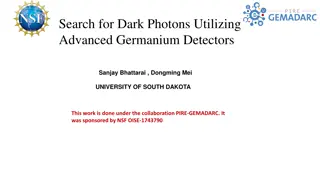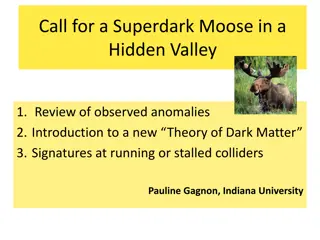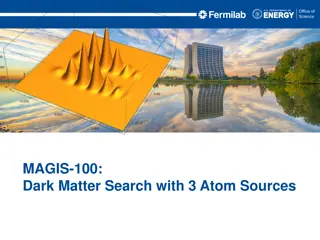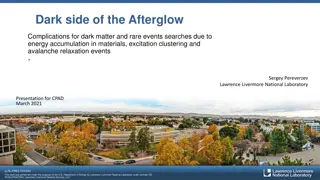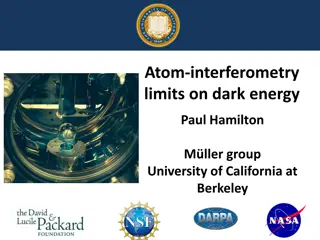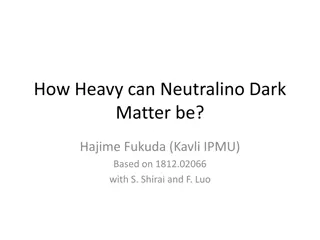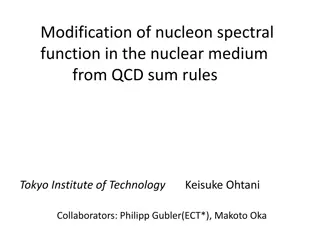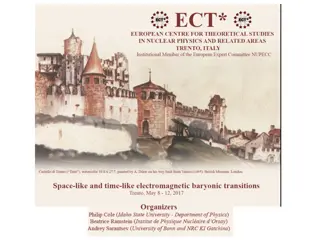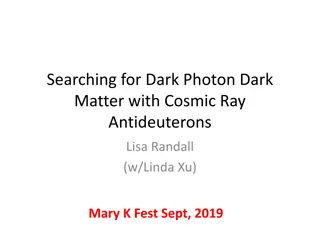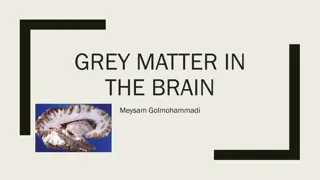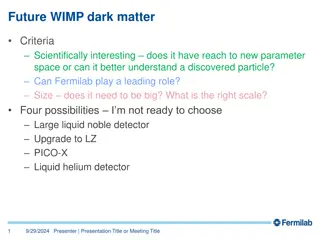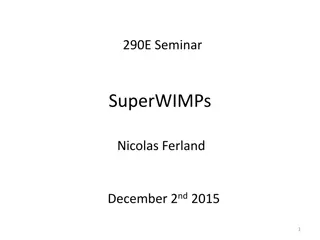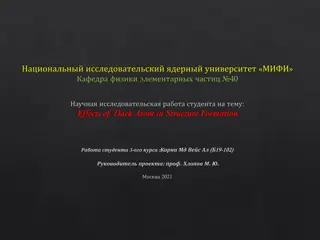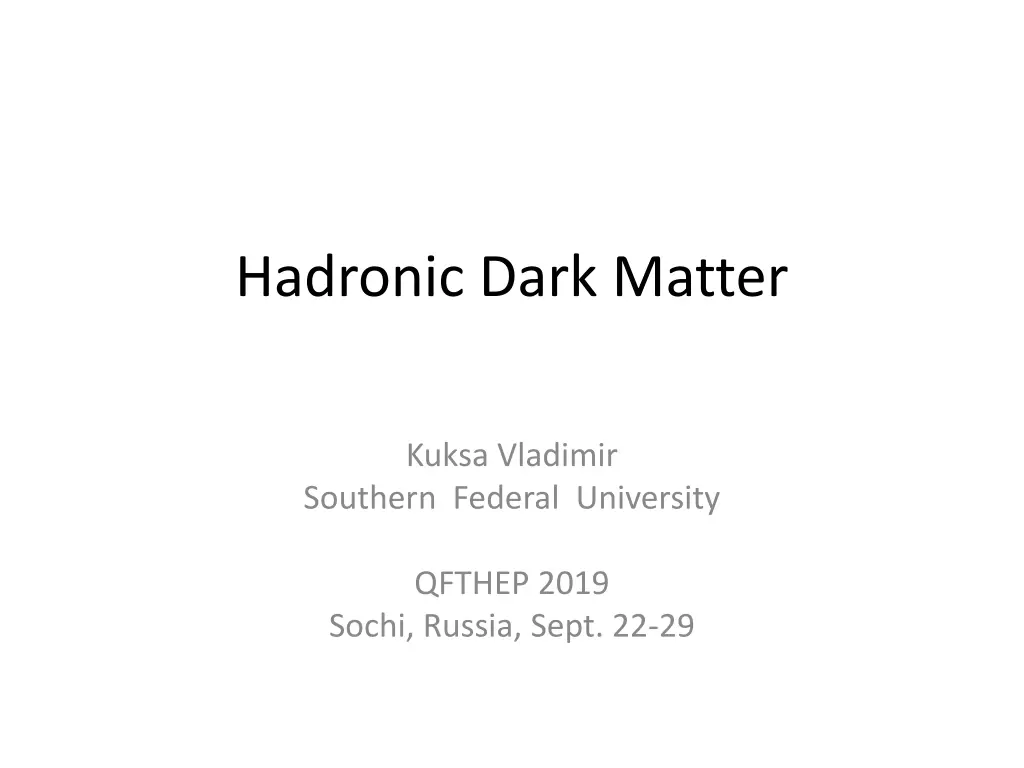
New Discoveries in Hadronic Dark Matter Research
Explore the latest findings on hadronic dark matter, including new heavy hadrons as potential DM particles, experimental restrictions on new quarks, quantum numbers and quark structure of new hadrons, properties of new mesons, low-energy interactions with nucleons, and conclusions on the HDM scenario. Discover how these insights challenge existing restrictions and signal the presence of large-mass DM hadrons with unique decay patterns and transitions, shedding light on the mysteries of the universe.
Download Presentation

Please find below an Image/Link to download the presentation.
The content on the website is provided AS IS for your information and personal use only. It may not be sold, licensed, or shared on other websites without obtaining consent from the author. If you encounter any issues during the download, it is possible that the publisher has removed the file from their server.
You are allowed to download the files provided on this website for personal or commercial use, subject to the condition that they are used lawfully. All files are the property of their respective owners.
The content on the website is provided AS IS for your information and personal use only. It may not be sold, licensed, or shared on other websites without obtaining consent from the author.
E N D
Presentation Transcript
Hadronic Dark Matter Kuksa Vladimir Southern Federal University QFTHEP 2019 Sochi, Russia, Sept. 22-29
Contents New heavy hadrons as Dark Matter particles. Experimental restrictions on new quarks. Quantum numbers and quark structure of new heavy hadrons. Main properties of new mesons as DM particles. Low-energy interactions of DM particles with nucleons. Conclusions.
Quantum numbers and quark structure of new hadrons
Conclusions HDM is not excluded by EW and CC restrictions Large mass of new DM hadrons (100 TeV) Signals of charge M-decay: low-energy leptons Hyperfine mass-splitting in M-M*: signal - low- energy photons (KeV) and dissipative low-energy transition in DM Analysis of HDM scenario with account of M*, co- annihilation and number-changing processes



